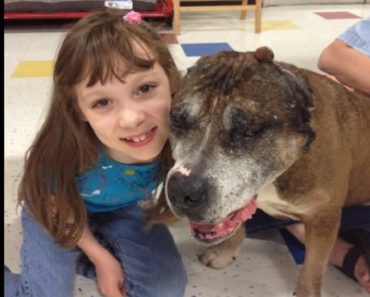As a dog owner, it is important to familiarize yourself with the various aspects of your furry companion’s health. One condition that can impact your dog’s behavior is Cushing’s disease. This article aims to provide you with a better understanding of Cushing disease dog behavior and how to manage it effectively.
Cushing’s disease, also known as Cushing’s syndrome, is a condition in dogs where the adrenal glands overproduce certain hormones. This can be caused by a tumor in the pituitary gland or adrenal gland or excessive use of steroids. The disease is characterized by several clinical signs, including increased appetite, drinking and urinating more, lethargy, poor hair coat, and a bloated abdomen.
To effectively manage the behavior changes associated with Cushing’s disease, it is crucial to comprehend its underlying causes and treatment options. Medication, surgery, or discontinuation of steroids may be recommended based on the type of Cushing’s disease and its severity.
By understanding the behavioral symptoms of Cushing’s disease, dog owners can implement appropriate strategies to manage their dog’s behavior. This may include providing a consistent routine, engaging in suitable exercise and mental stimulation, and closely monitoring the dog’s health.
Key Takeaways:
- Cushing’s disease in dogs is characterized by the overproduction of certain hormones.
- Common clinical signs include increased appetite, drinking and urinating more, lethargy, and poor hair coat.
- Diagnosis involves various tests, such as the ACTH stimulation test and abdominal ultrasound.
- Treatment options depend on the underlying cause and may include medication or surgery.
- Managing dog behavior includes providing a consistent routine and addressing specific behavior issues.
What is Cushing’s Disease?
Cushing’s disease, also known as hyperadrenocorticism, is a condition characterized by the overproduction of cortisol, a hormone produced by the adrenal glands.
There are three types of Cushing’s disease: pituitary gland tumor, adrenal gland tumor, and iatrogenic Cushing’s disease caused by excessive administration of steroids. Pituitary gland tumors are the most common cause, accounting for 85-90% of cases. Adrenal gland tumors can be benign or malignant, and excessive cortisol can also be caused by prolonged use of steroids.
Cortisol is responsible for various functions in the body, including regulating metabolism, immune response, and stress response. However, when there is an excess of cortisol due to Cushing’s disease, it can lead to a range of symptoms and health issues in dogs.
It is important for dog owners to be aware of the signs of Cushing’s disease, such as increased thirst, excessive urination, weight gain, muscle weakness, and skin problems. Early detection and appropriate management are key to ensuring the best possible outcomes for dogs with this condition.
Cortisol and Its Effects
Cortisol, often referred to as the “stress hormone,” plays a vital role in the body’s response to stress and helps regulate various processes. However, when cortisol levels become excessively high due to Cushing’s disease, it can disrupt the body’s normal functioning.
- Excessive cortisol can weaken the immune system, making dogs more susceptible to infections and diseases.
- Elevated cortisol levels can lead to increased appetite and weight gain, as well as the redistribution of fat to certain areas of the body.
- Dogs with Cushing’s disease may experience muscle weakness and loss of muscle mass.
- The skin and coat may be affected, with hair loss, thinning fur, and increased susceptibility to infections.
It is essential for dog owners to work closely with their veterinarian to diagnose and manage Cushing’s disease effectively. Treatment options may include medication to control cortisol levels, surgery to remove tumors, and lifestyle modifications to support the dog’s overall health and well-being.
Clinical Signs of Cushing’s Disease
Dogs with Cushing’s disease may exhibit a range of clinical signs that can help identify the condition. These signs can vary in severity and may not be present in all dogs. It is important for dog owners to be aware of these signs and consult their veterinarian if they suspect their dog may have Cushing’s disease.
Some of the most common clinical signs of Cushing’s disease in dogs include:
- Increased appetite: Dogs with Cushing’s disease often experience a marked increase in their appetite. They may seem constantly hungry and may beg for food more frequently.
- Increased water consumption: Dogs may drink more water than usual, leading to increased urination.
- Urinating more frequently: Dogs with Cushing’s disease may need to urinate more frequently and may have accidents inside the house.
- Lethargy: Dogs may appear tired and lack energy. They may be less active and show less interest in playing or going for walks.
- Poor hair coat: The coat of a dog with Cushing’s disease may become thin, dull, and brittle. Hair loss may also occur, especially on the body and tail.
- Bloated abdomen: Dogs may develop a bloated or pot-bellied appearance due to an accumulation of fat in the abdomen.
- Panting: Excessive panting, even when not hot or exerting themselves, can be a sign of Cushing’s disease in dogs.
- Thin skin: The skin may become thin and fragile, making it more prone to injury and bruising.
- Chronic skin infections: Dogs with Cushing’s disease may develop frequent skin infections that are slow to heal.
- Dark-colored spots: Dark-colored spots or patches may appear on the skin, especially in areas where the skin is thin.
- Skin mineralization: In some cases, the skin may become hardened or mineralized, leading to a rough texture.
- Poor skin healing: Wounds or cuts may take longer to heal or may not heal properly in dogs with Cushing’s disease.
- Persistent bladder infections: Dogs may be more prone to bladder infections, which can cause recurrent urinary tract infections.
If you notice any of these clinical signs in your dog, it is important to consult your veterinarian for a proper diagnosis and treatment plan. Early detection and management of Cushing’s disease can help improve your dog’s quality of life.
Diagnosing Cushing’s Disease
When it comes to diagnosing Cushing’s disease in dogs, veterinarians utilize a variety of tests to ensure an accurate diagnosis. The diagnostic process often involves a combination of tests that can help measure the levels of cortisol in the body and detect the presence of tumors.
The two most common tests used for diagnosing Cushing’s disease are the ACTH stimulation test and the low-dose dexamethasone suppression test. The ACTH stimulation test evaluates the adrenal glands’ response to adrenocorticotropic hormone (ACTH) by measuring the cortisol levels before and after ACTH administration. This test helps determine if the adrenal glands are overproducing cortisol.
Another commonly used test is the low-dose dexamethasone suppression test. This test involves administering a low dose of dexamethasone, a synthetic glucocorticoid, and measuring cortisol levels before and after its administration. The test evaluates how the body responds to the suppression of cortisol production.
In addition to these tests, an abdominal ultrasound may be performed to visualize the adrenal glands and detect the presence of any tumors. This imaging technique allows veterinarians to assess the size, shape, and structure of the glands, providing valuable information for diagnosis.
During the diagnostic process, veterinary professionals may also assess the cortisol:creatinine ratio in urine samples. This ratio helps evaluate the amount of cortisol excreted in the urine and can provide further insight into the presence of excessive cortisol production.
It’s important to note that in some cases, additional tests may be necessary to determine the specific type of Cushing’s disease. These tests may include high-dose dexamethasone suppression tests, urine cortisol-to-cortisone ratio, or specialized imaging techniques, such as computed tomography (CT) or magnetic resonance imaging (MRI).

Treating Cushing’s Disease
When it comes to treating Cushing’s disease in dogs, the approach depends on the underlying cause of the condition. The three main causes of Cushing’s disease in dogs are pituitary tumors, adrenal tumors, and iatrogenic Cushing’s disease caused by the excessive use of steroids.
Pituitary tumors, which are responsible for the majority of Cushing’s disease cases in dogs, are commonly treated with medications such as trilostane, mitotane, selegiline hydrochloride, or ketoconazole. These medications work by decreasing the production of cortisol, the hormone that is overproduced in Cushing’s disease. Regular monitoring and dosage adjustments are necessary to ensure the effectiveness of the medication.
In cases where adrenal tumors are benign, surgical removal may be recommended. This procedure aims to remove the tumor and restore normal adrenal gland function. However, if the tumor is malignant, medications may be used to manage the disease and improve the dog’s quality of life.
Iatrogenic Cushing’s disease, which is caused by the prolonged use of steroids, is typically treated by discontinuing the use of steroids. In some cases, hormonal replacement therapy may be necessary to restore proper hormone balance in the dog’s body.
The choice of treatment for Cushing’s disease depends on various factors, including the type of tumor and the overall health of the dog. Veterinarians will assess the individual case and recommend the most appropriate treatment plan. It is important to follow the veterinarian’s instructions and regularly monitor the dog’s condition to ensure the best possible outcome.
With the right treatment approach and proper management, dogs with Cushing’s disease can lead happy and comfortable lives. It is crucial to work closely with a veterinarian and provide the necessary care and support to improve the dog’s quality of life.
Managing Dog Behavior with Cushing’s Disease
Dogs with Cushing’s disease can experience behavioral changes due to the effects of excessive cortisol on the brain. These changes may manifest as abnormal dog behavior, including increased thirst, appetite, and urination, as well as lethargy and alterations in activity levels.
As a responsible dog owner, it is crucial to understand and manage your dog’s behavior to ensure their well-being. Here are some dog behavior training tips to help you navigate the behavioral changes often associated with Cushing’s disease:
- Establish a consistent routine: Dogs thrive in a structured and predictable environment. Maintain a regular schedule for feeding, exercise, and rest to provide your dog with a sense of stability and security.
- Engage in appropriate exercise and mental stimulation: Regular physical activity is essential for managing energy levels and promoting overall well-being. Provide your dog with opportunities for exercise, such as daily walks or playtime. Additionally, mental stimulation activities, such as puzzle toys or obedience training, can help keep your dog’s mind engaged.
- Monitor your dog’s health closely: Cushing’s disease can cause various physical and behavioral symptoms. Keep a close eye on your dog’s behavior and consult your veterinarian if you notice any concerning changes. Regular veterinary check-ups are essential for monitoring your dog’s condition.
By implementing these dog behavior training tips and closely managing your dog’s behavior, you can help your furry companion adapt to the behavioral changes associated with Cushing’s disease. Remember, each dog is unique, so it’s essential to tailor your approach to suit your dog’s specific needs and temperament.
Conclusion
Cushing’s disease in dogs is a complex condition that requires careful management and treatment. While it cannot be cured, it can be effectively managed, allowing for a good quality of life for many dogs.
The prognosis for dogs with Cushing’s disease depends on various factors such as the type of tumor, the effectiveness of treatment, and the overall health of the dog. Regular monitoring and follow-up with a veterinarian are essential to ensure that the treatment is working effectively and to address any changes in behavior or symptoms.
With proper management and care, dogs with Cushing’s disease can live happy and fulfilling lives.
FAQ
What are the common behavior changes in dogs with Cushing’s disease?
Dogs with Cushing’s disease may exhibit increased thirst, appetite, and urination, as well as lethargy and changes in activity levels.
How can I manage my dog’s behavior with Cushing’s disease?
Managing your dog’s behavior with Cushing’s disease involves providing a consistent routine, engaging in appropriate exercise and mental stimulation, and monitoring your dog’s health closely.
Are there any behavior training tips for dogs with Cushing’s disease?
Yes, dog behavior training tips can help address specific behavior issues that may arise as a result of Cushing’s disease.
Can Cushing’s disease cause abnormal dog behavior?
Yes, Cushing’s disease can cause abnormal dog behavior due to the effects of excessive cortisol on the brain.
What are the behavioral symptoms of Cushing’s disease in dogs?
Behavioral symptoms of Cushing’s disease can include increased thirst, appetite, and urination, as well as lethargy and changes in activity levels.






